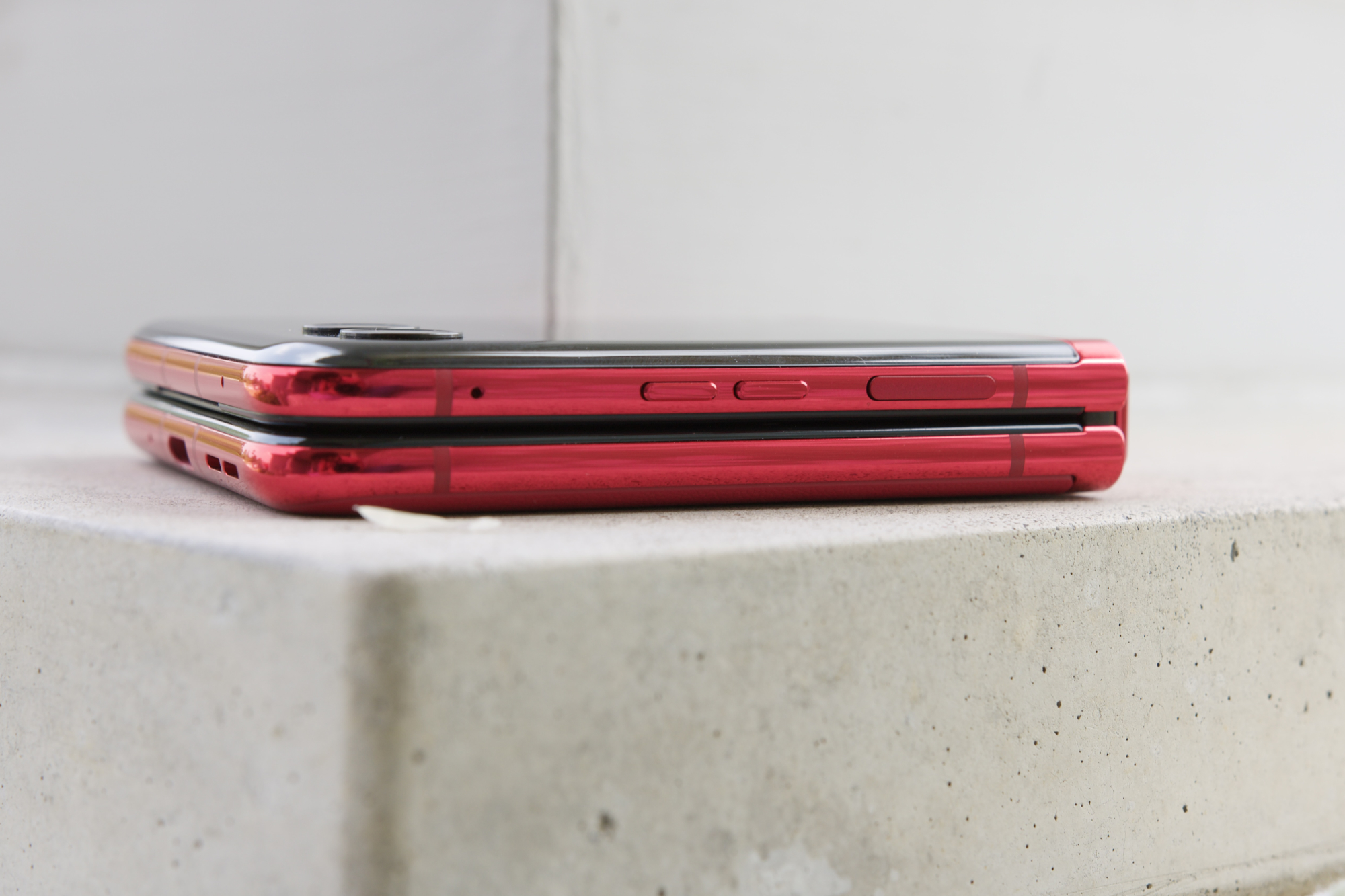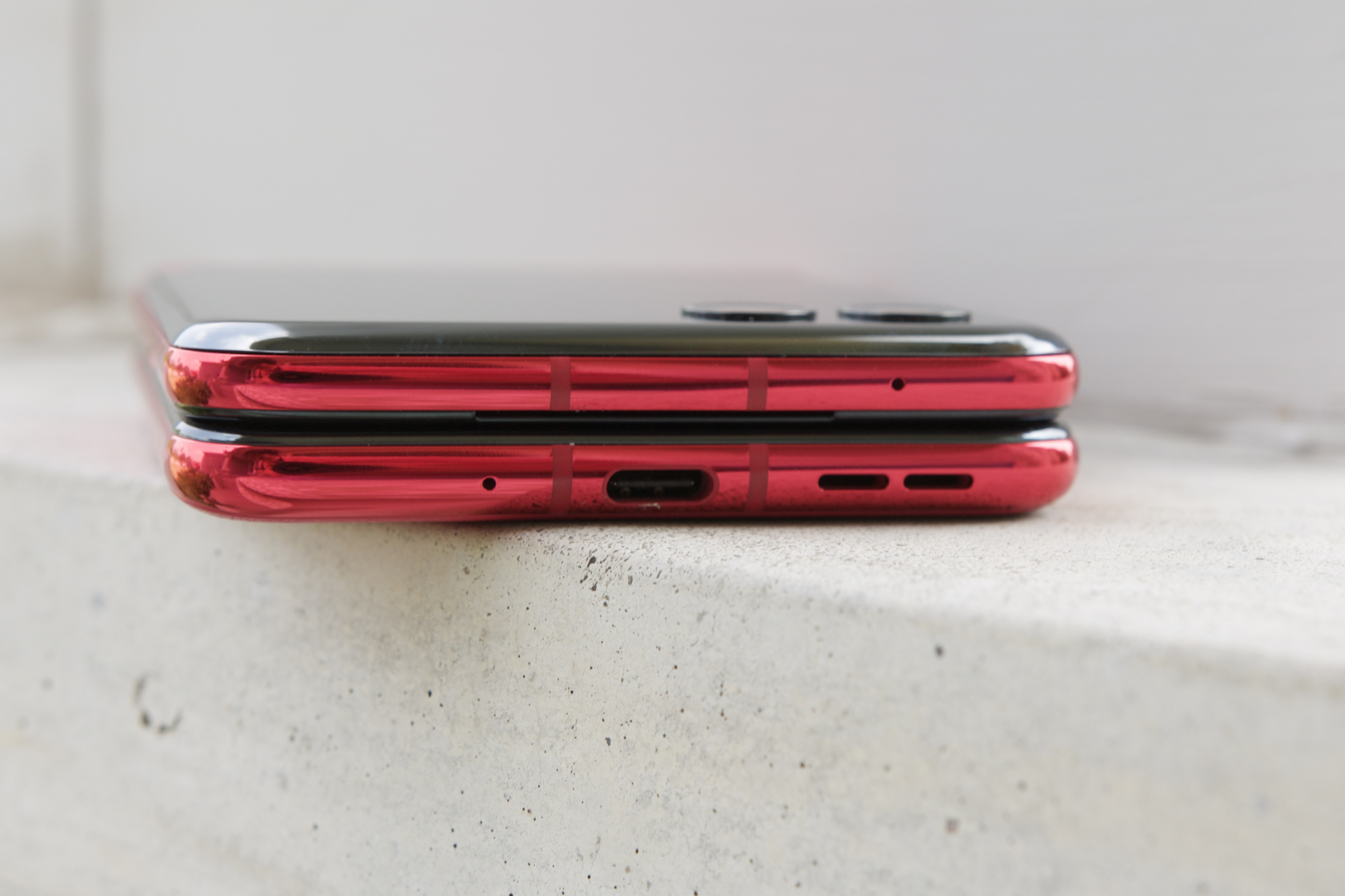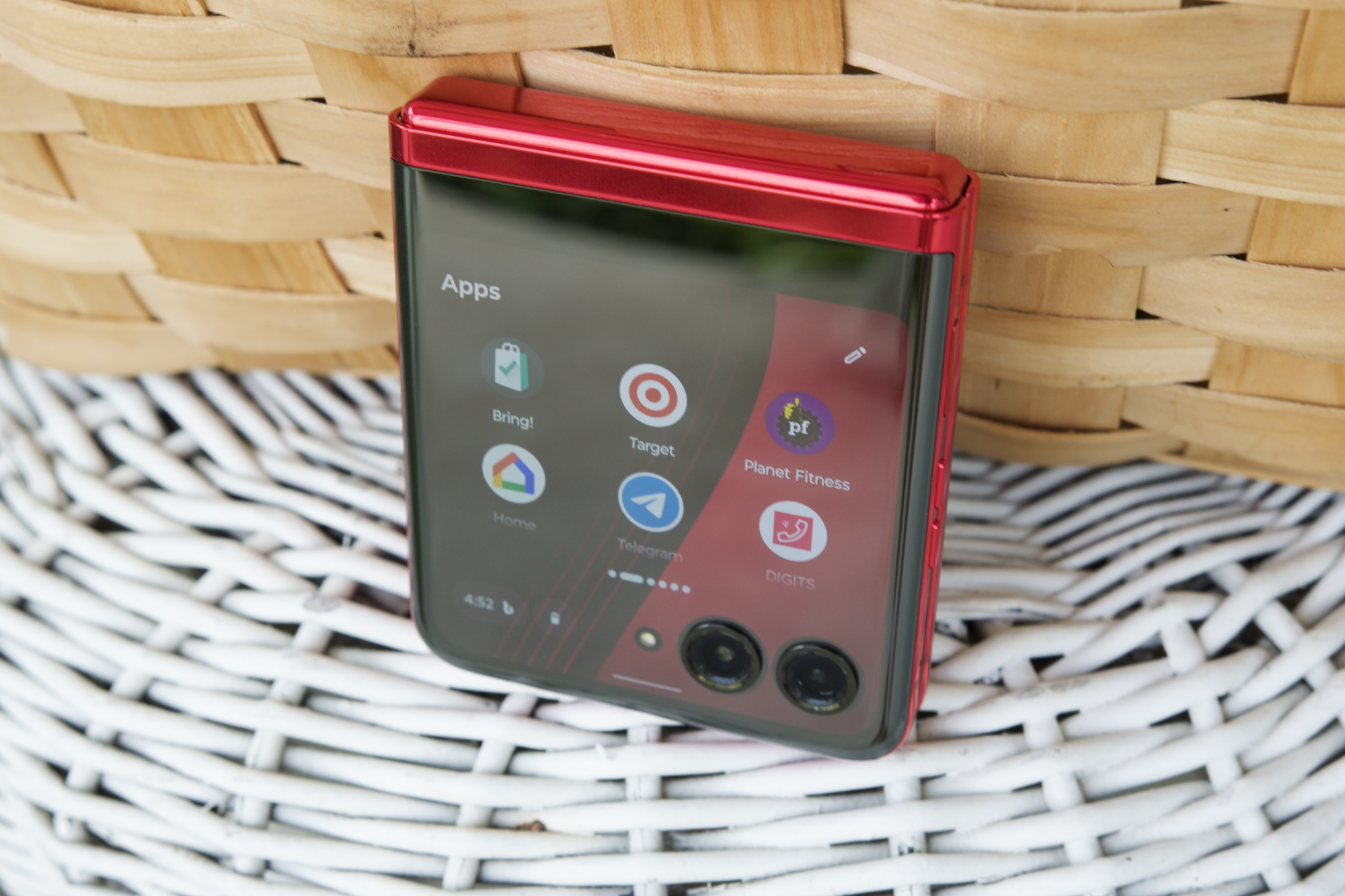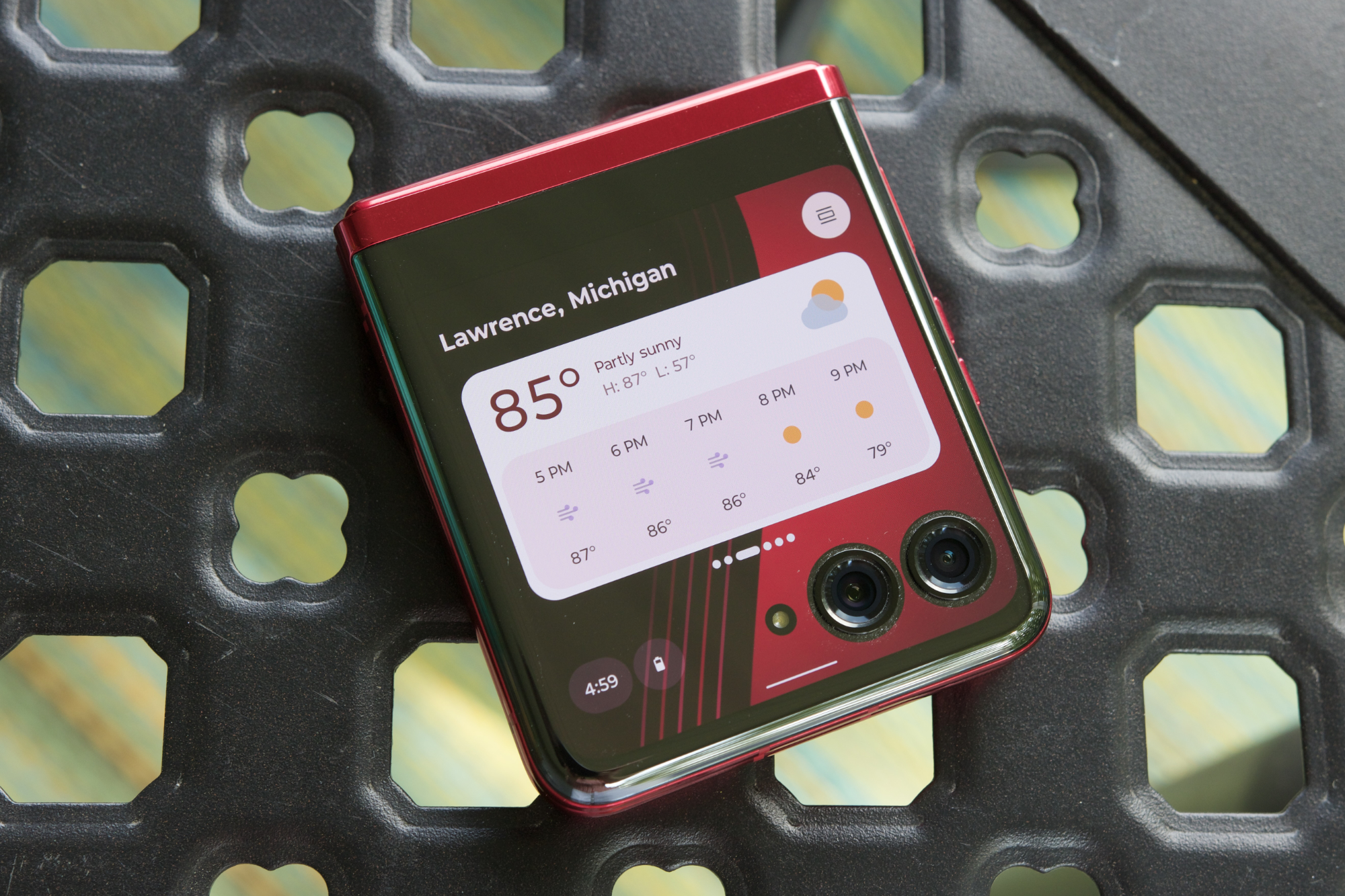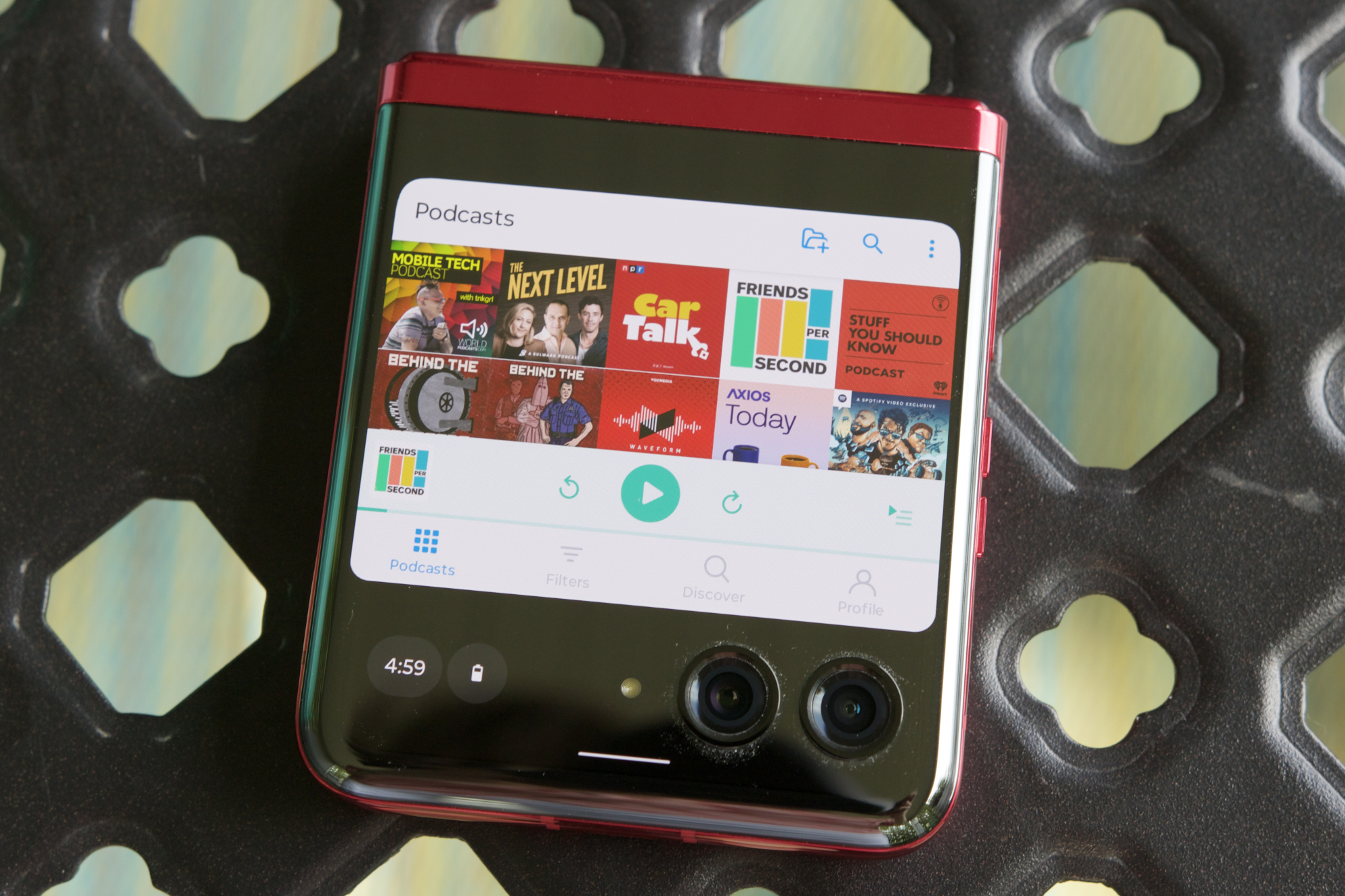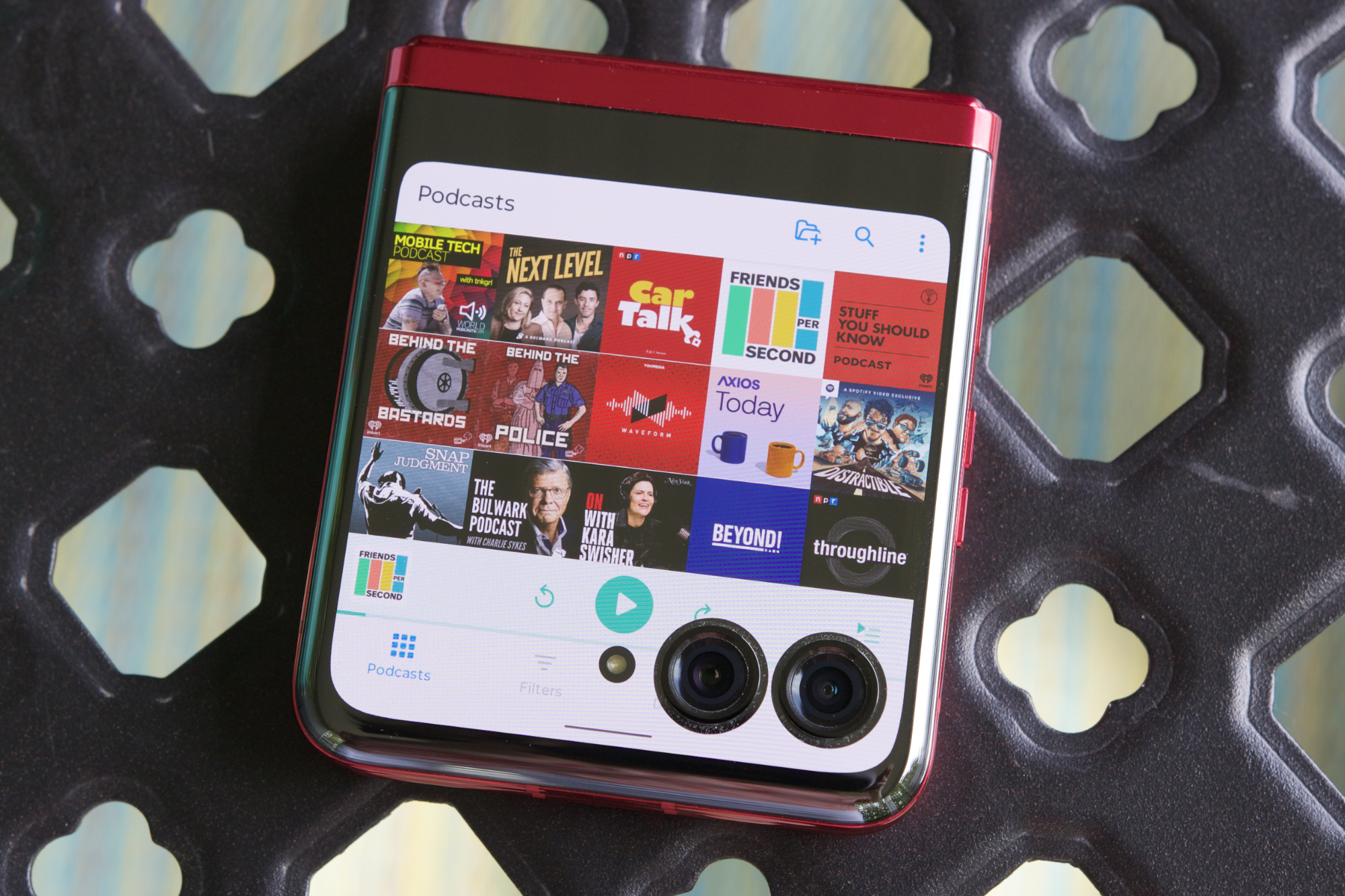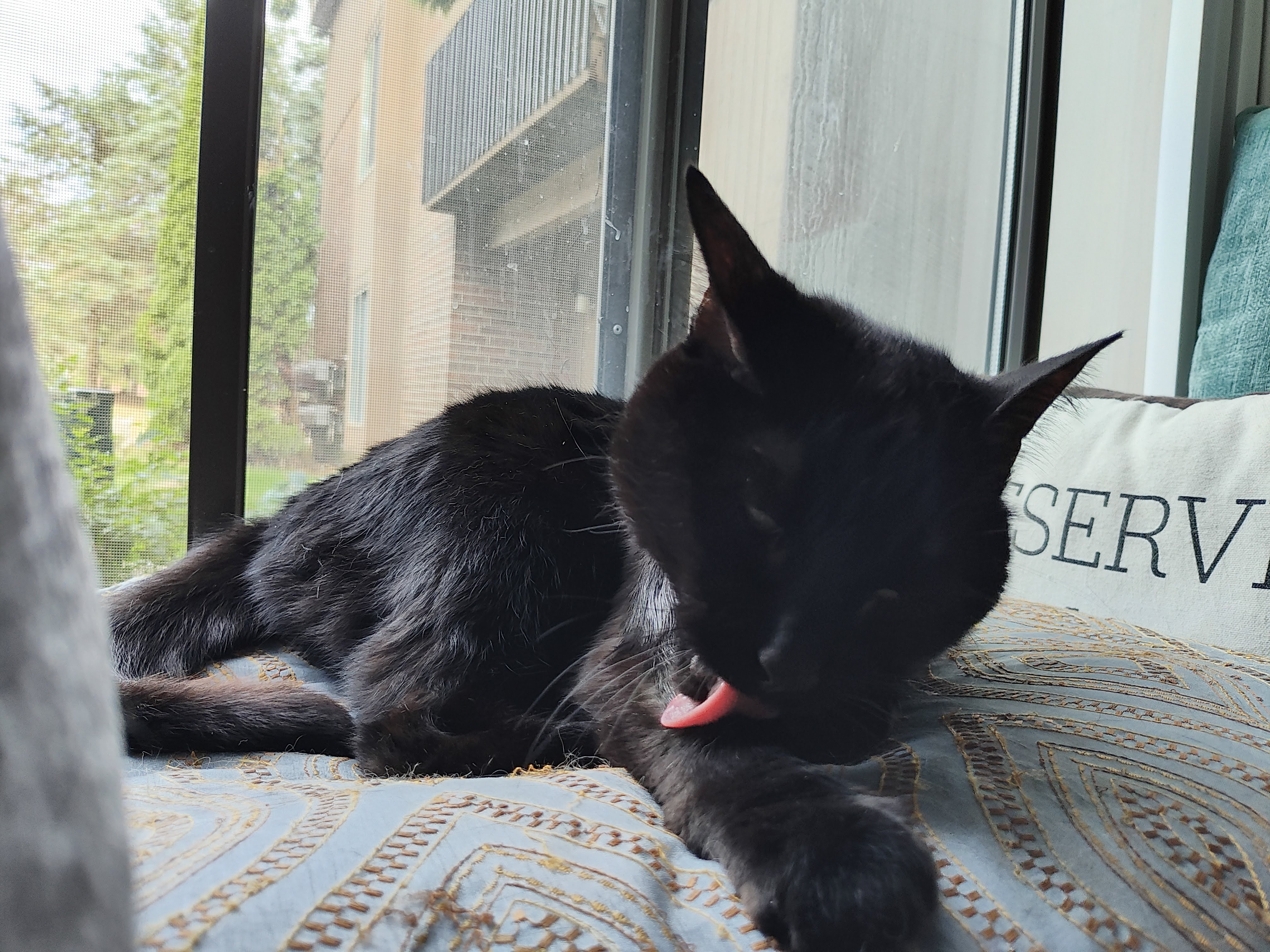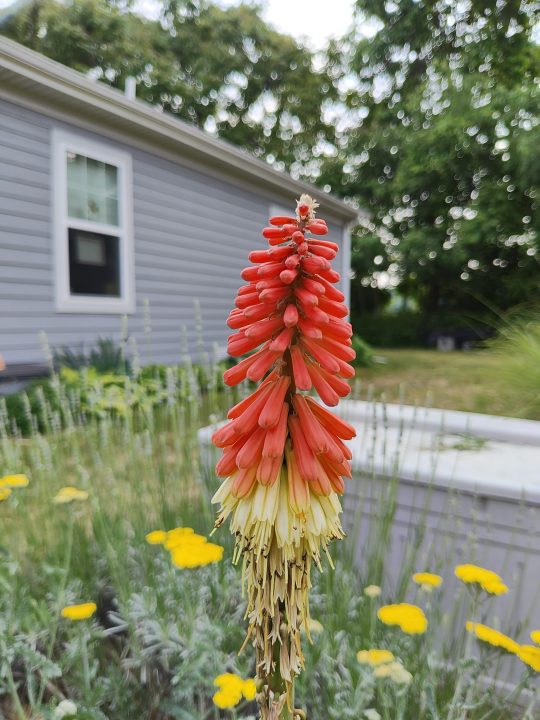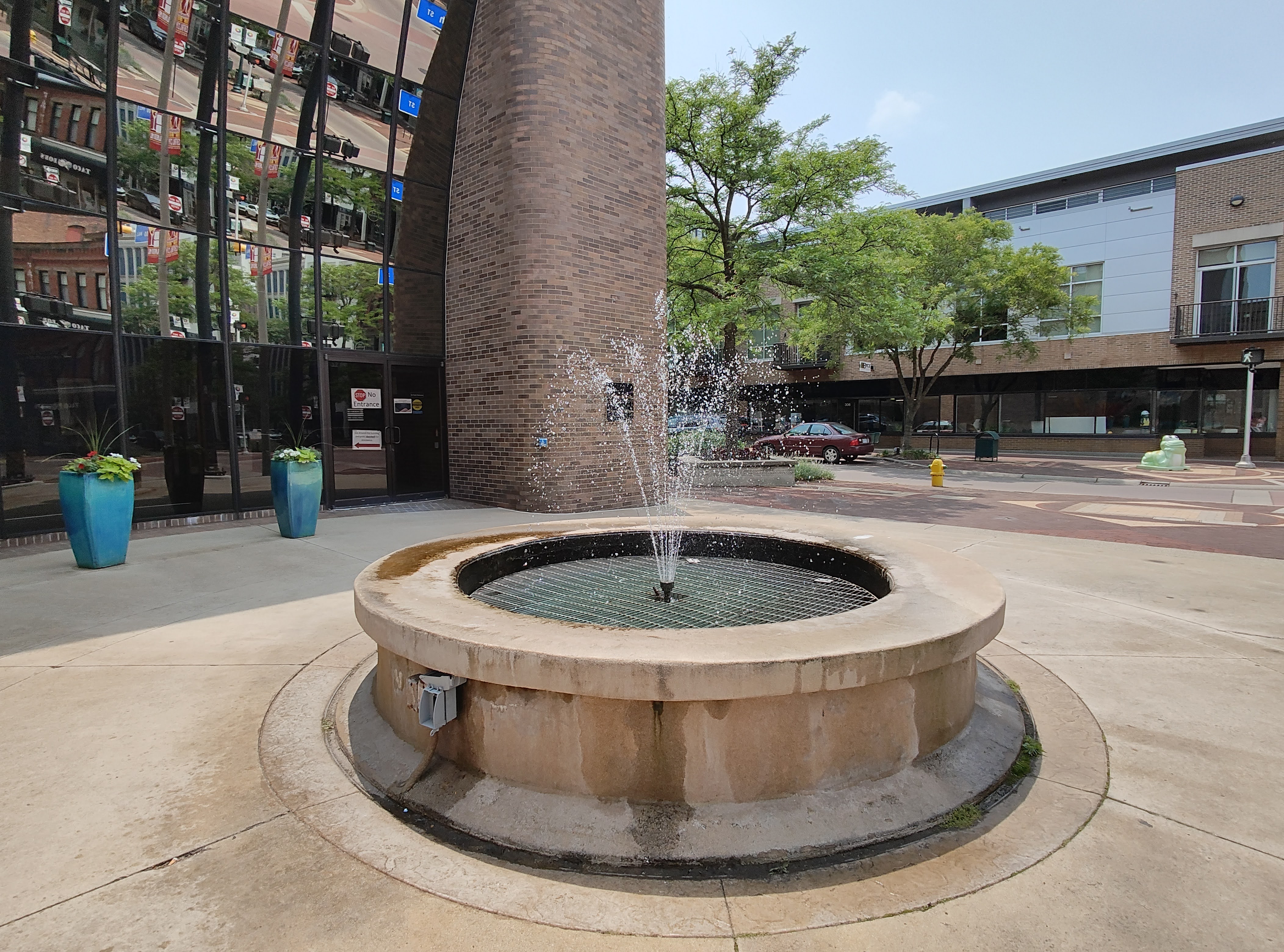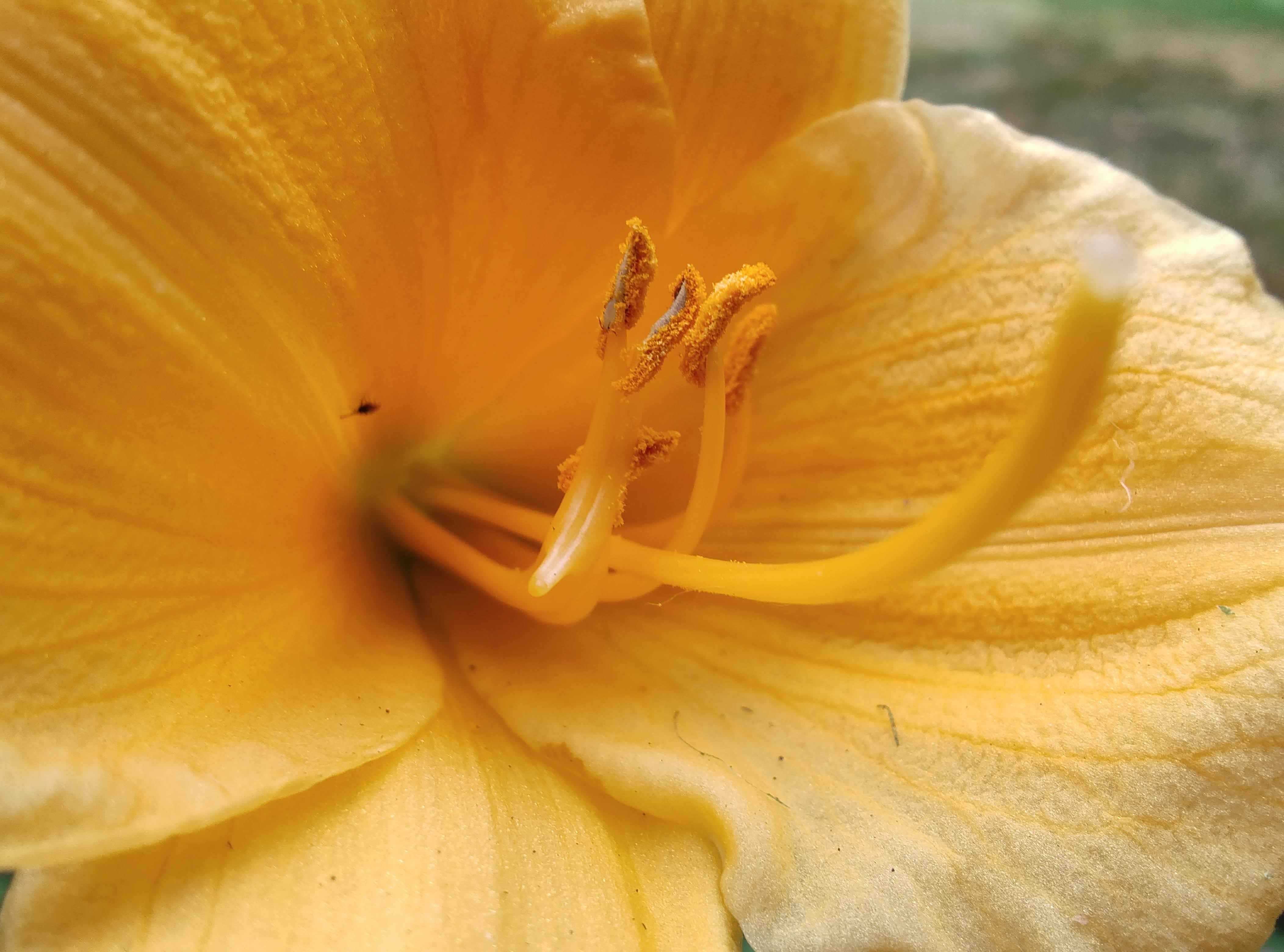“The Motorola Razr Plus is the best flip phone foldable I've ever used. Between the unmatched cover screen, stunning hardware, and powerful specs, there's just so much to like.”
- Viva Magenta color looks incredible
- Water and dust resistance
- Game-changing cover screen
- Super-minimal display crease
- Excellent performance
- Lovely software experience
- Mediocre cameras
- One-day battery life
- Wired charging capped at 30W
When I used the Motorola Razr Plus for the first time at the beginning of June, I was already asking myself if it was my favorite smartphone of the year — and that was after barely more than an hour with the phone. I’m now writing this review after using the Razr Plus for a little under two weeks, and even after uncovering some of its shortcomings and quirks, I still can’t shake that feeling.
Is the Motorola Razr Plus the most technically impressive phone I’ve used this year? No. Is it the absolute, very best smartphone for most people in 2023? Also, no! But of all the phones I’ve used this year, it’s the one I’ve had the most fun with. The Motorola Razr Plus is charming, delightful, and — hands down — the best flip phone foldable I’ve ever used.
About our Motorola Razr Plus review
Our Motorola Razr Plus review was originally published in late June 2023 and written by Joe Maring. It was then updated at the beginning of December by Andy Boxall, who revisited the phone and used it for a further 10 days. Joe Maring used a U.S. Razr Plus, and Andy Boxall used the U.K. Motorola Razr 40 Ultra, which is the same phone, just with a different name.
You can find a section about Andy’s experience with the Razr Plus right below, but the overall score hasn’t changed, and it’s still highly recommended.
Motorola Razr Plus: six months later
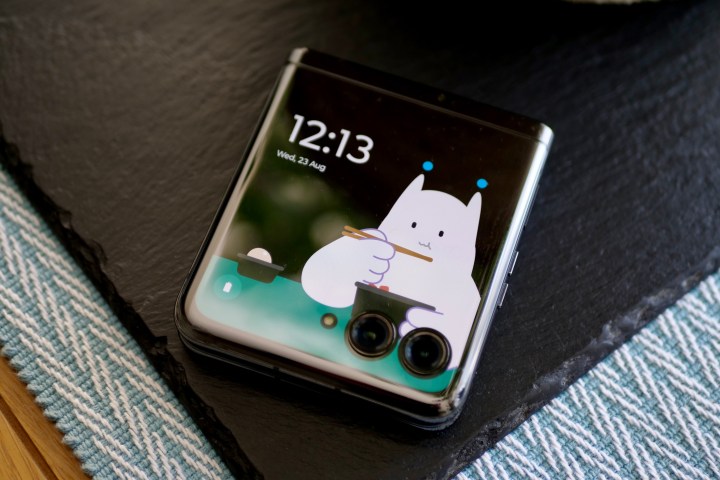
I had an emotional time with the Motorola Razr Plus when I used it in December 2023, as I loved certain aspects, but was frustrated by others. But what about using it every day? I returned to the Motorola Razr Plus during a period when I really needed a reliable phone with good battery life that wouldn’t let me down. Under normal circumstances, my phone is a simple tool for recreation and messaging, but for the last week, it has been an important communication device when time was incredibly tight.
It has held up well, but it isn’t perfect. The battery has lasted an entire day without a problem, with 60% remaining after two hours of screen time and 30 minutes of calls. I wasn’t interested in playing games. I just needed it to hold up, which it did. However, I doubt it would last more than a day if I was pushing it hard or playing games.
The Razr Plus reliably pulled in a 4G and 5G signal and made calls in low signal areas, but one person being called did say the conversation was difficult due to the signal dropping. I also had a couple of calls drop out completely despite the signal being present, and the phone can get quite warm against your cheek when it’s in this state, too. I can’t say for sure this was all the Razr Plus’s fault, but the antenna didn’t seem as strong as on some other phones I’ve used.
I love the design, the Viva Magenta color, the multifunctional and large cover screen, and Moo on the cover screen, but I miss an always-on display. It’s also frustrating that the phone still doesn’t have an update to Android 14, which is already available on the Samsung Galaxy Z Flip 5 and the Oppo Find N2 Flip. I’d still choose the Z Flip 5 over it at full price, but Motorola has had some very competitive offers on the Razr Plus recently, and anything lower than the full retail price makes it very tempting — and a great way to enjoy high-end folding phone ownership.
Motorola Razr Plus: design and durability
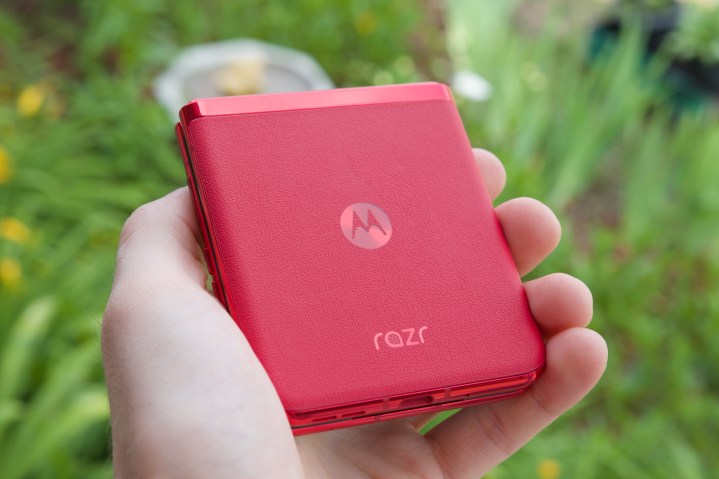
The Motorola Razr Plus is visually stunning — especially if you get it in the Viva Magenta color that I’ve been using. Motorola partnered with Pantone for this particular color, which was crowned Pantone’s “Color of the Year” for 2023.
That partnership aside, all you really need to know is that Viva Magenta looks jaw-dropping on the Razr Plus. The glossy aluminum frame is covered in a bright, saturated red hue that’s clearly visible from every angle. Even if the Razr Plus is closed shut and sitting on a desk or table, its Viva Magenta finish is impossible to ignore.
Viva Magenta looks jaw-dropping on the Razr Plus.
My favorite part, though, is how the color also carries over to the vegan leather backside of the Razr Plus. The leather looks outstanding, gives the Razr Plus excellent grip, and prevents it from sliding around on virtually any surface. As someone who proudly carried a leather Moto X for as long as I could, having a leather Motorola phone once again warms my cold, nerdy heart.
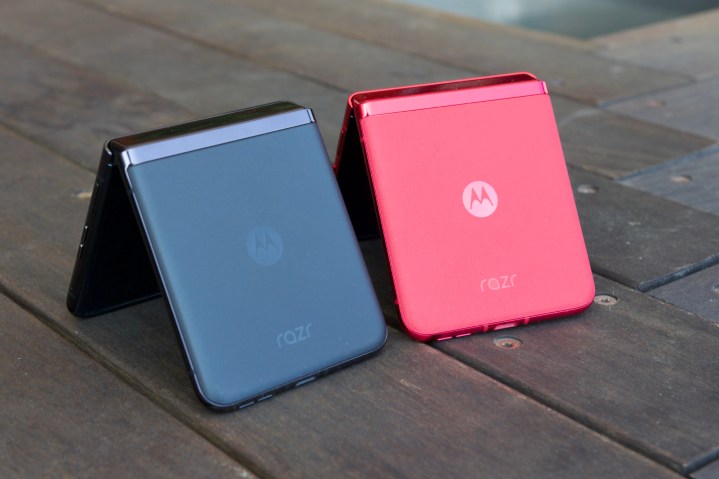
Although Viva Magenta is the color to get for the Razr Plus, the other two finishes — Infinite Black and Glacier Blue — also look nice. They aren’t quite as eye-catching, and they replace the leather backside with a frosted glass one, but they’re still great options to have.
That’s enough raving about the colors. How’s the rest of the Motorola Razr Plus’ design? In short, it’s very good!
Motorola’s hinge mechanism for the Razr Plus feels good to me. It’s not as stiff as the hinge on the Samsung Galaxy Z Flip 4, meaning it can’t stay propped open at any angle the way Samsung’s foldable can. However, I’ve never really found it to be an issue. The Razr Plus’ hinge can easily hold it upright at most reasonable angles to use the phone in “Flex View,” as Motorola calls it. The hinge will flop all the way down if you try bending the Razr Plus back too much in a way the Flip 4 doesn’t, but I don’t imagine it’ll be a problem for the vast majority of users.
While it’s difficult to say right now how the hinge will hold up after months or years of use, it’s continued to feel excellent in the time that I’ve had the Razr Plus. And, most important of all, you can pretty comfortably flip the phone open and close it shut one-handed – just like in the good old days.
The Motorola Razr Plus also has something I’ve never seen on a folding phone before: dust resistance. The Razr Plus features an IP52 rating, meaning it’s officially protected against dust and dripping water. While other foldables have long had brushes and other internal safety mechanisms to prevent damage from dust and other particles, the Razr Plus is the first one with a proper IP rating in that regard. It may not be as durable as the IP68 rating we see on non-folding phones like the Galaxy S23 Ultra and Google Pixel 8 Pro, but for a folding phone, it’s damn impressive.
A few other tidbits before moving on:
- The fingerprint sensor embedded in the power button is great; very fast and reliable.
- I mostly like the volume buttons. They’re clicky and easy to press. but feel a bit more wobbly than I’d like.
- The vibration motor is OK. It mostly feels good, but it has an audible buzz sound I’m not a fan of.
- Even after dropping my Razr Plus twice on hardwood floors in my apartment, it’s come out 100% unscathed.
Motorola Razr Plus: cover screen

As impressive as the Motorola Razr Plus’ design is, the real highlight of the phone is its cover screen. Taking over the front of the Razr Plus is a 3.6-inch pOLED display, and despite it being a “secondary” screen, it has every specification you could ask for. It’s HDR10+ certified, the 1066 x 1056 resolution gives it a 413 pixels per inch (ppi) density, and it has a 144Hz refresh rate. Yes, the Razr Plus’ cover screen has a faster refresh rate than the iPhone 15 Pro.
Technically, the cover screen looks excellent. Colors are bold and vibrant, it’s more than sharp enough, and the 144Hz refresh rate (while overkill) is a visual treat. But it’s not just how the cover screen looks that makes it so impressive — it’s what you can do with it.

The cover screen’s main home screen shows the time, date, and weather. Swipe down from the top of the cover screen, and you’ll see your Quick Settings with controls for brightness, Wi-Fi, Bluetooth, Google Wallet, etc. Notification icons are displayed at the bottom, and tapping them displays a familiar notification panel that lets you dismiss and open them.
The home screen also shows various “panels.” There are eight panels you can choose from (Apps, Calendar, Contacts, Games, Google Fit, Google News, Spotify, and Weather). You can turn these panels on and off as you please and customize the order of them however you see fit. You can tap on the panel icons on the home screen to jump to a specific one or swipe left/right on the home screen to browse them that way.
For the most part, I quite like Motorola’s panel system. Being able to quickly see a three-day weather forecast and my upcoming calendar appointments is great, as is having quick access to shortcuts for contacts and apps. However, the panels are also quite limited. The dedicated Spotify panel is great if you’re a Spotify user, and it’s optimized perfectly for the cover screen. But if you’re an Apple Music or YouTube Music user, you don’t get any such panel. The calendar panel has also proven quite buggy. It often gets stuck on the previous day and only updates to the current date after tapping the view button to cycle it between the month and agenda view. Motorola could easily expand on its whole panels idea, and I hope it does. There’s a good foundation here, and I really hope it continues to get better with time.

If these panels were your only way to interact with the Razr Plus’ cover screen, their limitations would be a fairly big deal. However, they’re far from it. Similar to the Razr (2022), Motorola allows you to run any Android app on the Razr Plus’ cover screen. If you have an Android app installed on the Razr Plus, you can run it on the cover screen.
I’ve waited years for a folding flip phone with a cover screen this powerful.
When you open an app on the Razr Plus’ cover screen, you can use it in Default view or Full Screen. Default view adds a virtual bezel at the bottom of the app so it’s not cut off by the rear cameras, and also shows your battery icon, notifications, and the time. If you change it to Full Screen, the app takes over the entirety of the cover screen. You can switch between views at any time by pressing and holding at the bottom of the screen, and the phone will remember your view preference on a per-app basis. In other words, you can run Twitter in Full Screen, but Google Maps in Default view without having to manually switch back and forth every single time.
If you run apps in Full Screen, the cameras and LED flash will cut into the app and make certain menus/buttons impossible to see or use. And that’s OK! Some apps look better in Default view, others look just fine in Full Screen mode, and I love that Motorola gives you the freedom to use whichever mode you’d like.
Is it silly to run Android apps on a 3.6-inch display? It sure can be! But I’ve also found legitimately great uses for it. When I go to the gym or want to grab a coffee, being able to scan my Planet Fitness or Starbucks bar code without opening the Razr Plus is fantastic. It’s also great for looking at my shopping list on the Bring! app, checking/replying to messages on Telegram, and finding podcasts to listen to on Pocket Casts.

And Motorola doesn’t stop there. You can allow/deny apps from running on the cover screen on a per-app basis and control how they transition between the main screen to the cover display. You can prevent apps from transitioning at all, get a tap-to-transition prompt on the cover screen after closing the phone with an app open, or have apps automatically open on the cover screen after closing the Razr Plus.
As you can tell, there’s a lot you can do. It’s entirely possible to do everything you want on the Razr Plus’ cover screen without ever opening the phone. You may not want to, but the option is there — and I adore that Motorola lets you run buck wild here. I haven’t even mentioned the half-dozen games you can play on the cover screen! This is probably a good thing … seeing how I’ve lost far too many hours playing Stack Bounce when I should have been writing this review. I’ve waited years for a folding flip phone with a cover screen this powerful. Motorola nailed it.
However, it’s not the only compact folding phone with a cover screen that can run apps. You can run certain apps (or any app, if you’re prepared to work for it) on the Samsung Galaxy Z Flip 5‘s cover screen, and following a few software updates, the Oppo Find N2 Flip‘s cover screen can also run third-party apps. Motorola is no longer the only game in town if you want apps on a tiny outer screen.
Motorola Razr Plus: main screen
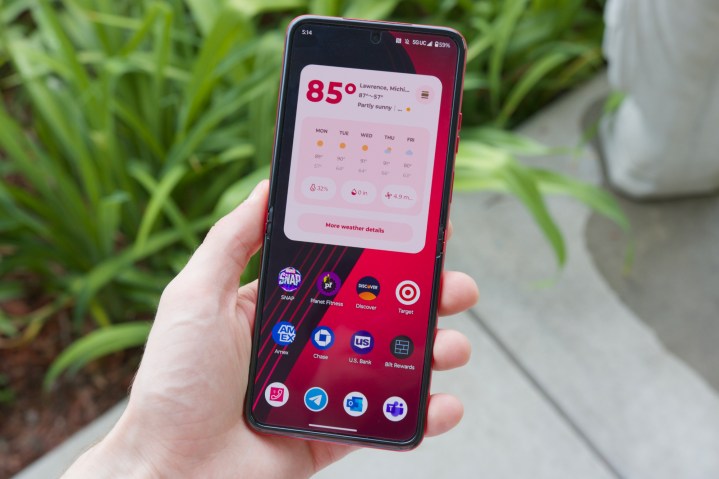
Of course, the cover screen isn’t the only display you get on the Razr Plus. Open the Motorola Razr Plus, and you’re treated to a 6.9-inch pOLED display. It has a 2640 x 1080 resolution, 1,400 nits of peak brightness, HDR10+ support, and a 165Hz refresh rate. As the specs suggest, it’s a lovely display.
The Razr Plus’ main screen has it all: big and bold colors, sharp text, and ample brightness for outdoor use. The 165Hz refresh rate is also wonderful. Everything looks buttery smooth on the Razr Plus, and while I would have been perfectly happy with a 120Hz panel, I’m not complaining that Motorola went all-out with 165Hz.
I’m also quite happy with the crease in the main display. You can see a slight ripple effect in the middle of the screen under direct light, and it is noticeable when you run your finger across it. But it’s miles better than the crease on the Galaxy Z Flip 4. It is there, and you will notice it, but it’s far easier to ignore and forget about than the Z Flip’s crease.
Motorola Razr Plus: cameras

Almost every smartphone has to cut corners somewhere, and with folding phones, that usually applies to camera quality. The Motorola Razr Plus is equipped with a 12MP primary camera with an f/1.5 aperture and optical image stabilization (OIS). It also has a 13MP ultrawide camera with a 108-degree field of view, plus a 32MP selfie camera on the inside.
With specifications like that, it shouldn’t come as much of a surprise that the Razr Plus’ camera system isn’t anything to write home about. It’s a fine camera setup that can produce decent-looking shots, and I wouldn’t call it outright “bad.” But for a $1,000 smartphone, it’s certainly not the best you can do.
The biggest problem with the Razr Plus’ camera is its consistency. Some photos, like the shot of the soda bottles or my cat sitting on my lap, look very good! But there are other times when the Razr Plus just misses the mark. The photo above of my dog makes his fur appear very saturated, to the point where it almost looks orange. In reality, he has a very natural tan color. It also does a poor job capturing my black cat cleaning herself, totally erasing the detail in her fur and not being able to keep up with her movement.
But at the same time, I quite like the portrait photo of my partner standing in the pool. I also think the Razr Plus made the chocolate chip pancakes look very appetizing — though not so much for the slice of pepperoni pizza.
The ultrawide camera is similarly mediocre. In the photo of the nature trail, it does a poor job of handling the sunlight poking through the trees, but it doesn’t struggle as much with the picture of the rising sun over the pond. I also would have appreciated a wider field of view. While 108 degrees is good, it’s much narrower than the 120 degrees found on other flagship phones.
What the ultrawide camera is great for, though, is macro photos. I’ve had a lot of fun getting some really close-up shots with the Razr Plus, and the macro results it churns out are quite good.
Lastly, there’s the 32MP selfie camera. It’s very forgettable. Photos often look washed-out, it does a terrible job of handling bright and overcast skies, and the fixed-focus nature of the camera means it can’t autofocus on subjects if you get closer or further from the sensor.
The upside, however, is that you can totally ignore the bad selfie camera and just use the Razr Plus’ 12MP main camera for selfies. The cover screen acts as a perfect viewfinder for these shots, and the end results are often much better.
Motorola Razr Plus: performance and battery

Powering the Motorola Razr Plus is a Qualcomm Snapdragon 8+ Gen 1 — the same one used in many of the best Android phones released in 2022. Although it isn’t the newest chipset in Qualcomm’s portfolio, the Snapdragon 8+ Gen 1 is an extremely capable bit of silicon. Apps open instantly, it handles games with ease, and the 8GB of LPDDR5 RAM allows for seamless multitasking. Performance has never been an issue on the Razr Plus.
This also applies to the phone’s 5G performance. The Motorola Razr Plus only has sub-6 5G and does not support mmWave 5G. While that may sound like a problem for a $1,000 smartphone, it’s been a total nonissue in my testing. Using the phone on T-Mobile’s 5G network in southwest Michigan, the Razr Plus’ 5G performance is just as fast as my iPhone 14 Pro’s — easily achieving over 1Gbps download speeds in well-covered areas.
My biggest issue with the Razr Plus’ performance is how hot the phone gets. After playing Marvel Snap for 20 minutes, the top portion of the Razr Plus (around the cover screen) gets very warm. I haven’t noticed any heating issues during normal use, but if I game for any prolonged period of time, it’s not uncommon for the phone to heat up. It also gets quite warm when making extended phone calls too. Considering other Snapdragon 8+ Gen 1-equipped phones haven’t had this issue, I imagine Motorola had to scale back on its thermal management due to the Razr Plus’ form factor and size. It’s not a deal-breaker, but it did catch me off guard.
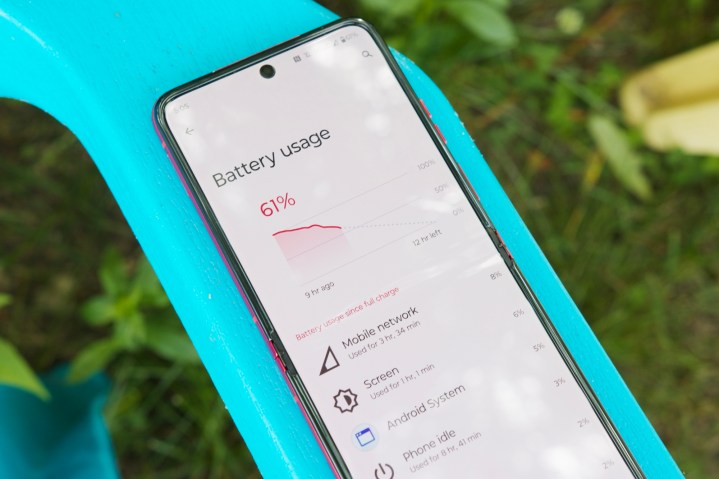
What about battery life? The 3,800mAh battery inside the Razr Plus is roughly the same as what you get in the Galaxy Z Flip 5, and similar to that phone, the Razr Plus has enough endurance for one day of use. With two hours of screen time (specifically on the main display), 30 to 50 minutes of gaming, and frequent use of apps like Twitter, Outlook, Microsoft Teams, Duolingo, TikTok, and Instagram, I’m ending most days on the Razr Plus with about 15% remaining — if not less. This also includes using the cover screen for checking notifications throughout the day, responding to Telegram messages, and playing Stack Bounce (it’s so good).
This is perfectly fine battery life. It’d be great if the Razr Plus could get through a day-and-a-half (or two days) on a charge, but that sort of endurance will probably be out of reach for foldable flip phones for a little while yet. I’m perfectly happy if I can comfortably get through a full day, and the Motorola Razr Plus has managed to do that consistently.
I feel similarly about the charging situation. The Razr Plus supports 30-watt wired charging and 5W wireless charging. Motorola’s not breaking any new ground here, but these are fine charging options.
Motorola Razr Plus: software and updates
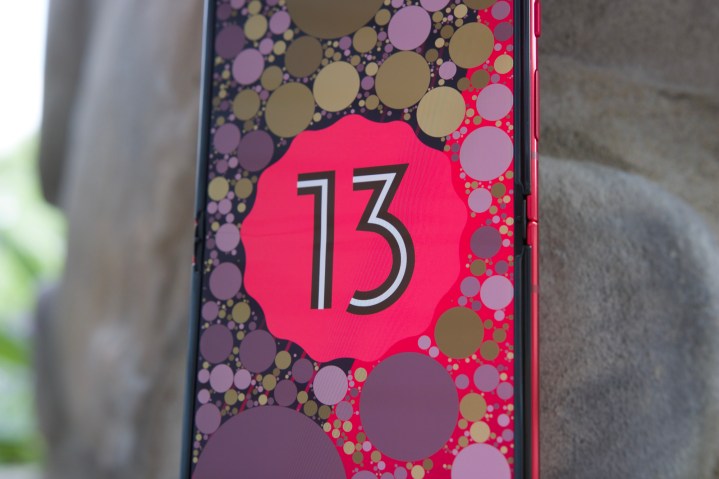
The Motorola Razr Plus runs Android 13 with Motorola’s typical customization tweaks. The overall user interface is very similar to what you’d find on a Pixel 7 — including a colorful Quick Settings menu, a Google Discover feed next to your leftmost home screen, and a theme engine that matches your current wallpaper.
It’s much simpler and cleaner than the software on a OnePlus or Samsung phone, and it’s one of my favorite ways to use Android. In fact, it’s one of the main reasons I ditched my iPhone for a Motorola phone earlier this year.
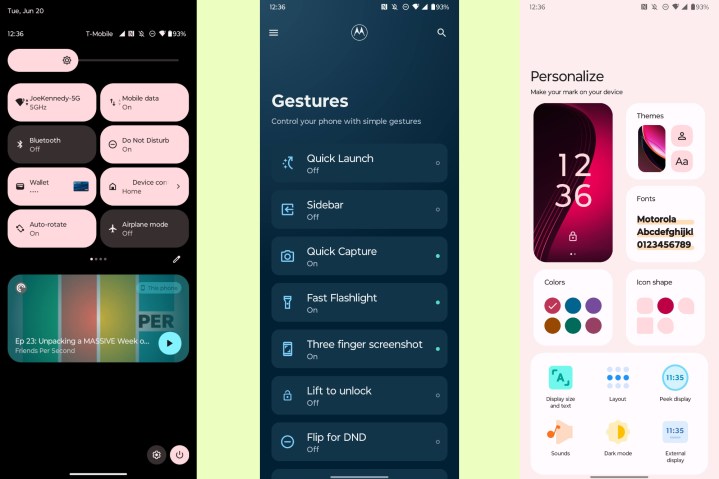
All of Motorola’s additions to Android are found in the Moto app. Here, you can access heaps of personalization tools — including the ability to change your font, app icon shape, accent color, and more. It’s also where you can customize Motorola’s excellent gestures (like chopping the Razr Plus to turn on the flashlight or twisting it to open the camera app).
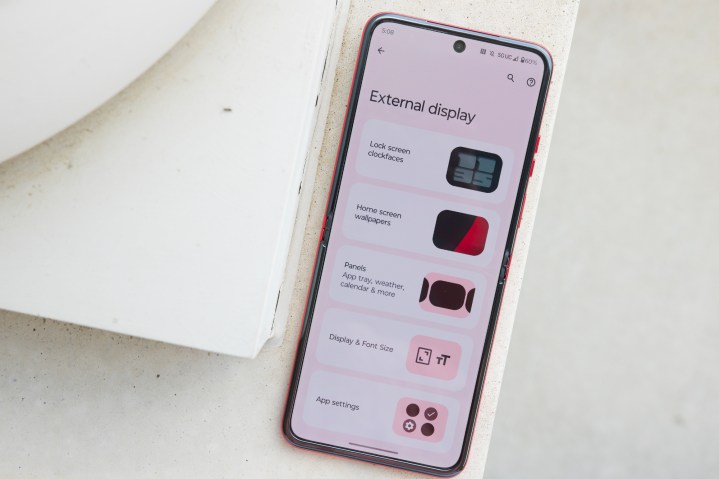
Jump into the Settings app, and you’ll find a dedicated External display option housing all of your controls for the cover screen. This is where you can change the cover screen clock and wallpaper, customize your panels, adjust the display/font size, and choose how apps work on the cover screen. It’s all organized incredibly well.
As for updates, Motorola says that the Razr Plus will get three OS upgrades and four years of bimonthly security updates. Although Google Pixel devices offer an extra year of security updates and many Samsung phones promise four OS upgrades, this is a considerable improvement from previous Moto phones.
It looks like we’re officially past the days of flagship Motorola handsets only getting one or two Android upgrades, and that’s great to see, but Android 14 still hasn’t arrived on the Razr Plus as of December 2023. This isn’t good, considering its rivals have already received the latest version of Android. Motorola has not provided an official time frame for release either.
Motorola Razr Plus: price and availability
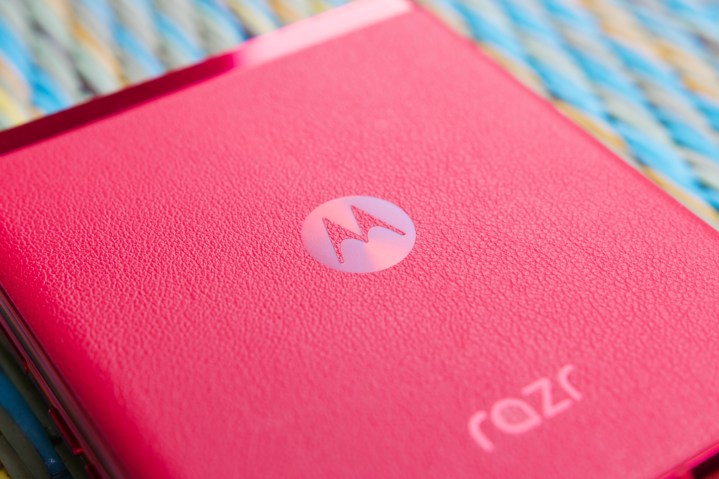
The Motorola Razr Plus is available for purchase now for $1,000. You can buy the phone unlocked at Amazon, Best Buy, and direct through Motorola’s website. If you prefer shopping via carriers, Motorola is selling the Razr Plus at AT&T, T-Mobile, Spectrum Mobile, Google Fi Wireless, and Optimum Mobile.
The Infinite Black and Glacier Blue colors are available everywhere the Razr Plus is sold, but if you want the Viva Magenta color shown throughout this review, you’ll need to get the Razr Plus from Amazon, Motorola’s website, or T-Mobile. The Razr Plus is available in just one storage and RAM configuration — specifically, 256GB of storage with 8GB of RAM.
There are two other things to consider before buying the phone. Motorola has run several great offers since the device launched, with the price reaching just $699 at one point, so look out for something similar before picking it up if you’re not in a hurry. The other thing to think about is whether the cheaper Motorola Razr (2023) would be enough for you, as it’s a brilliant phone that has made it onto one of our best-of-year lists already.
Motorola Razr Plus: verdict
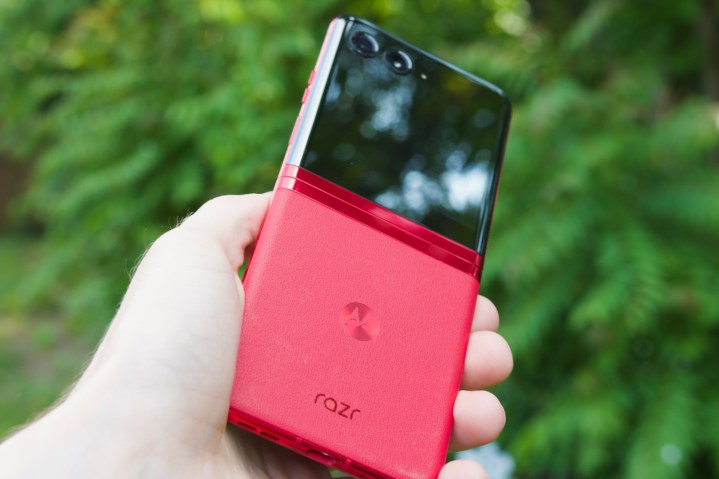
The Motorola Razr Plus is not a perfect phone. In fact, there are some pretty notable flaws that can make the $1,000 price tag difficult to swallow. The camera system is fine, but just fine doesn’t really cut it for a phone this expensive. Photo quality is a notable step down from the Galaxy Z Flip 5. One-day battery life is the minimum you should expect from a flagship smartphone in 2023, and the Razr Plus’ charging options (while OK) don’t do anything we haven’t seen before.
These are all legitimate reasons to think twice before buying the Razr Plus, especially when phones like the Galaxy S23 and OnePlus 11 don’t have those problems — and cost hundreds less.
The Motorola Razr Plus is my favorite flip phone foldable yet.
However, even with those imperfections in mind, I’ve had an absolute blast with the Motorola Razr Plus. It’s one of the most fun and enjoyable phones I’ve used all year. Thanks to the outstanding cover screen, lovely design, and well-executed software, the Razr Plus is one of those smartphones I don’t want to stop using. It’s not the most technically impressive and isn’t the best value phone you can buy, but it’s also unlike anything I’ve used before.
“Fun” is nearly impossible to quantify and means something different to everyone. But what I can say is that the Motorola Razr Plus — warts and all — is my favorite flip phone foldable yet.



